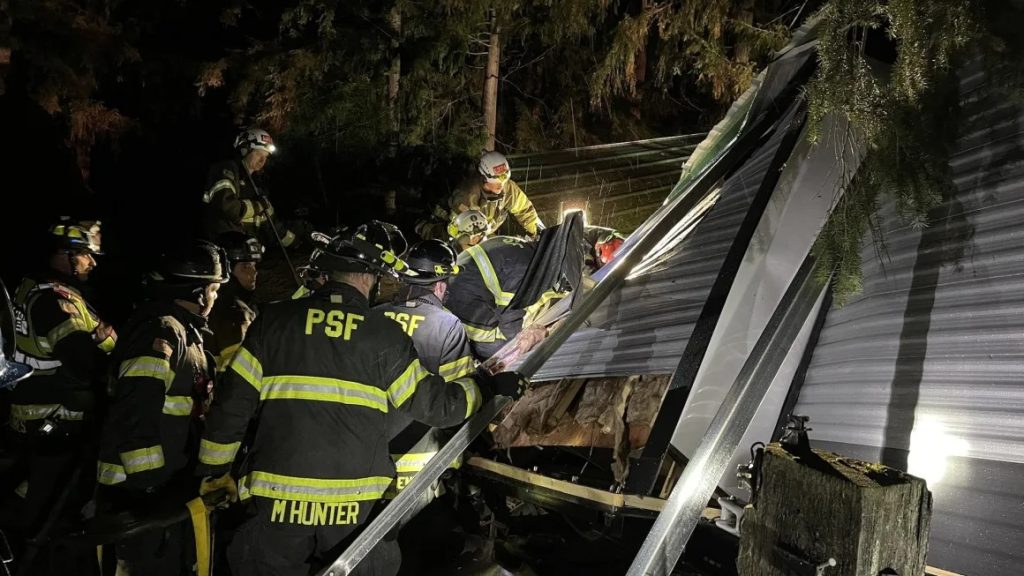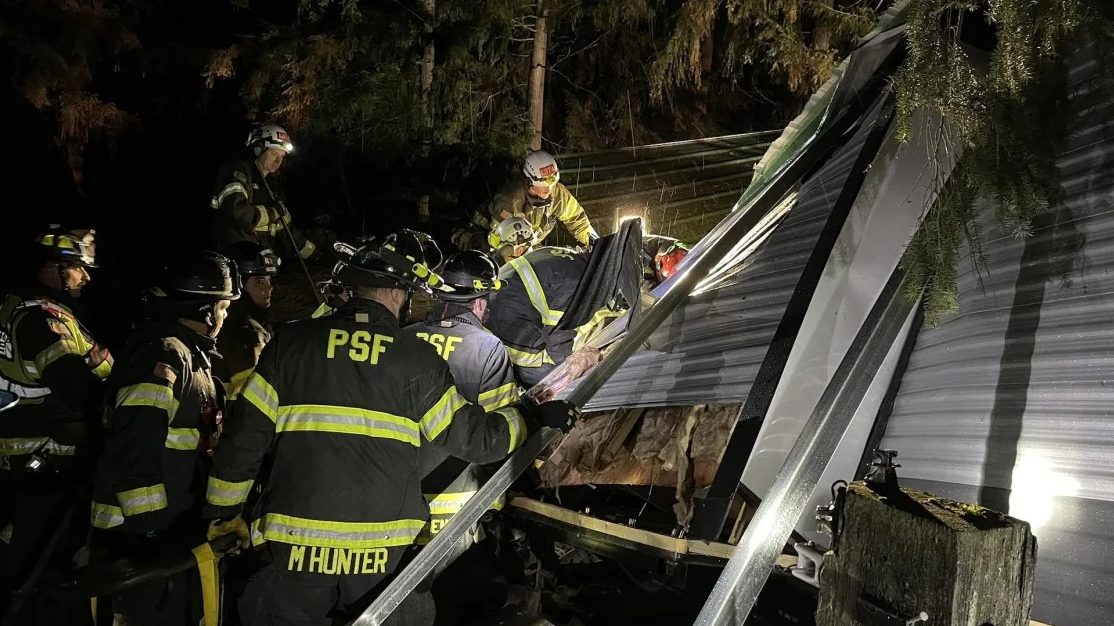Advertisements
A powerful bomb cyclone has unleashed destruction across the Pacific Northwest and parts of Canada, leaving a trail of devastation in its wake. With hurricane-force winds and an atmospheric river combining forces, the situation remains critical as heavy rains and life-threatening flooding are expected to follow.

The storm, described as a “once-in-a-decade” event, killed at least one person and caused widespread power outages. In Washington state alone, more than 500,000 homes and businesses were without power early Wednesday, with British Columbia reporting nearly 100,000 outages. The storm’s peak winds reached up to 77 mph, uprooting trees, damaging homes, and crippling energy infrastructure.
Advertisements
Devastation Across Communities
Seattle and its surrounding areas faced severe impacts. Puget Sound Energy reported over 450,000 customers affected by a “mass outage event” that could take days to resolve. Bellevue’s fire department described the conditions as “severe,” with falling trees causing multiple incidents. Tragically, a woman in her 50s lost her life when a tree struck a homeless encampment in Lynnwood.
Elsewhere, emergency responders worked tirelessly to rescue individuals trapped under fallen trees. In Maple Valley, two people were hospitalized after a tree crushed their trailer, with one requiring over an hour to be freed.
An Amtrak train carrying 47 passengers struck a tree near Stanwood but fortunately reported no injuries. However, the train remained inoperable after the collision.
Storm Intensifies Flood Risk
The bomb cyclone, which intensified rapidly in a process known as “bombogenesis,” has combined with an atmospheric river, creating a new threat: torrential rainfall and potential flash floods. Northern California and parts of the Pacific Northwest face a “high risk” warning for severe flooding, with the storm expected to peak by Thursday.
As authorities warn of life-threatening conditions, communities are bracing for the storm’s continued impact. Residents are urged to remain indoors and avoid travel in affected areas.


